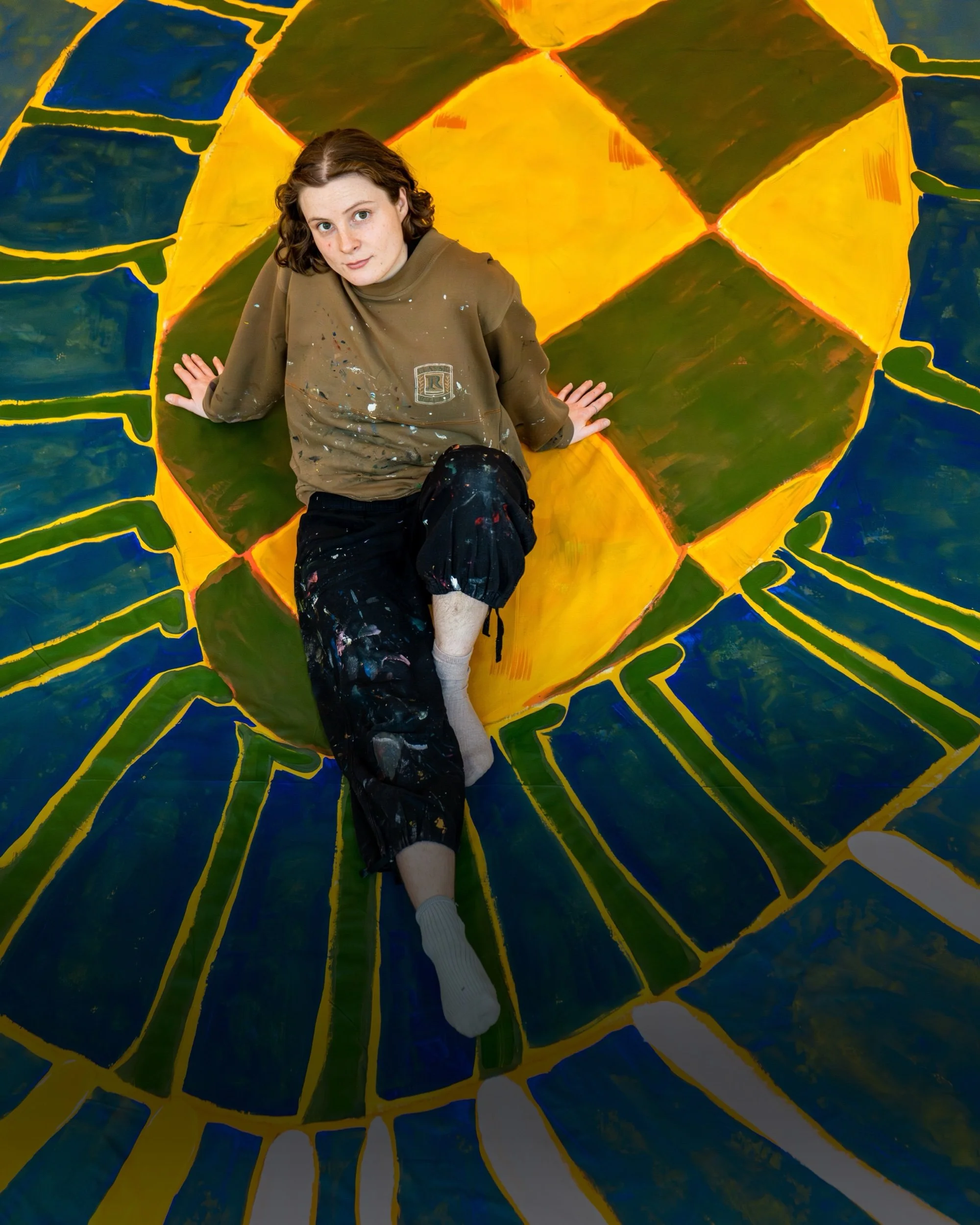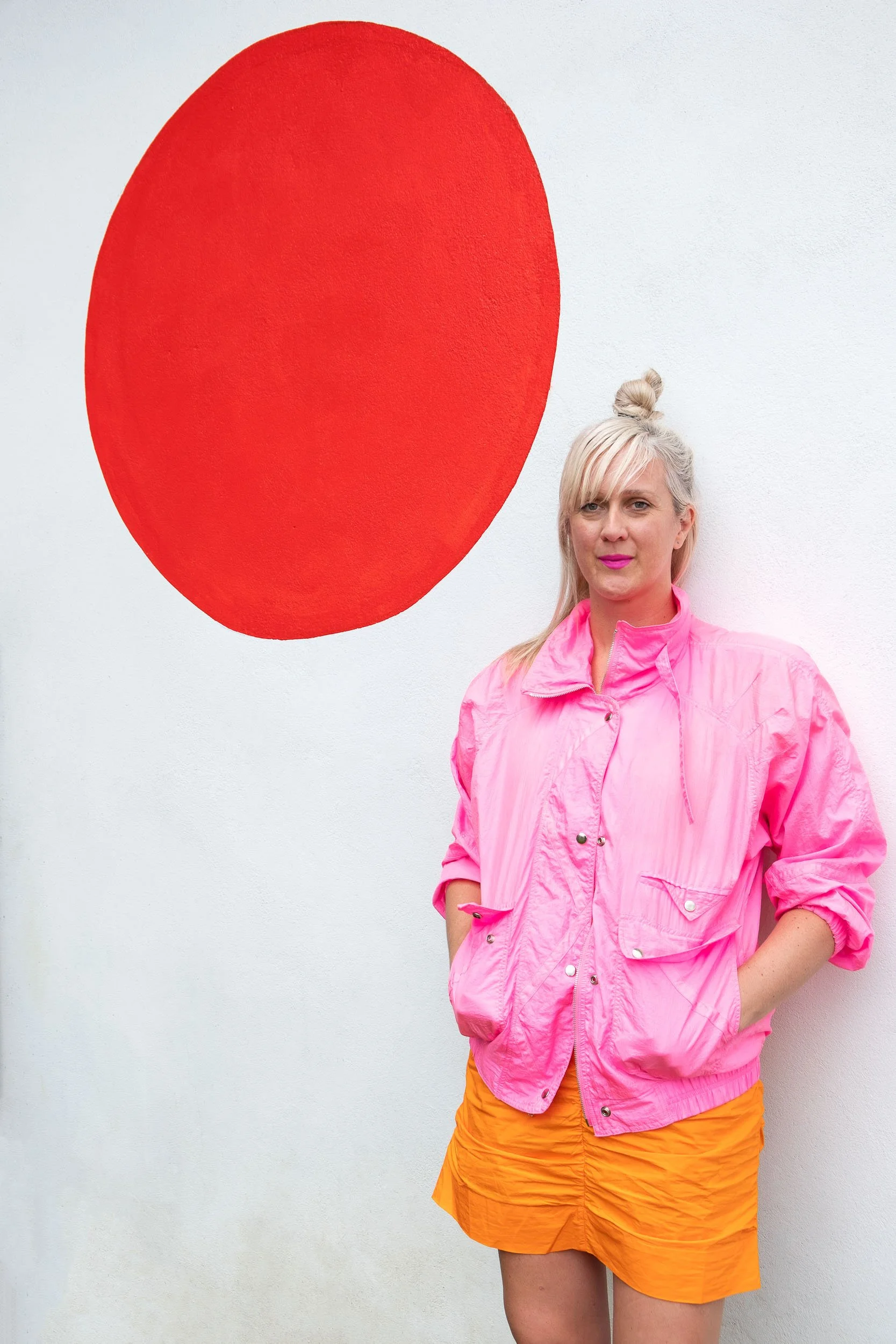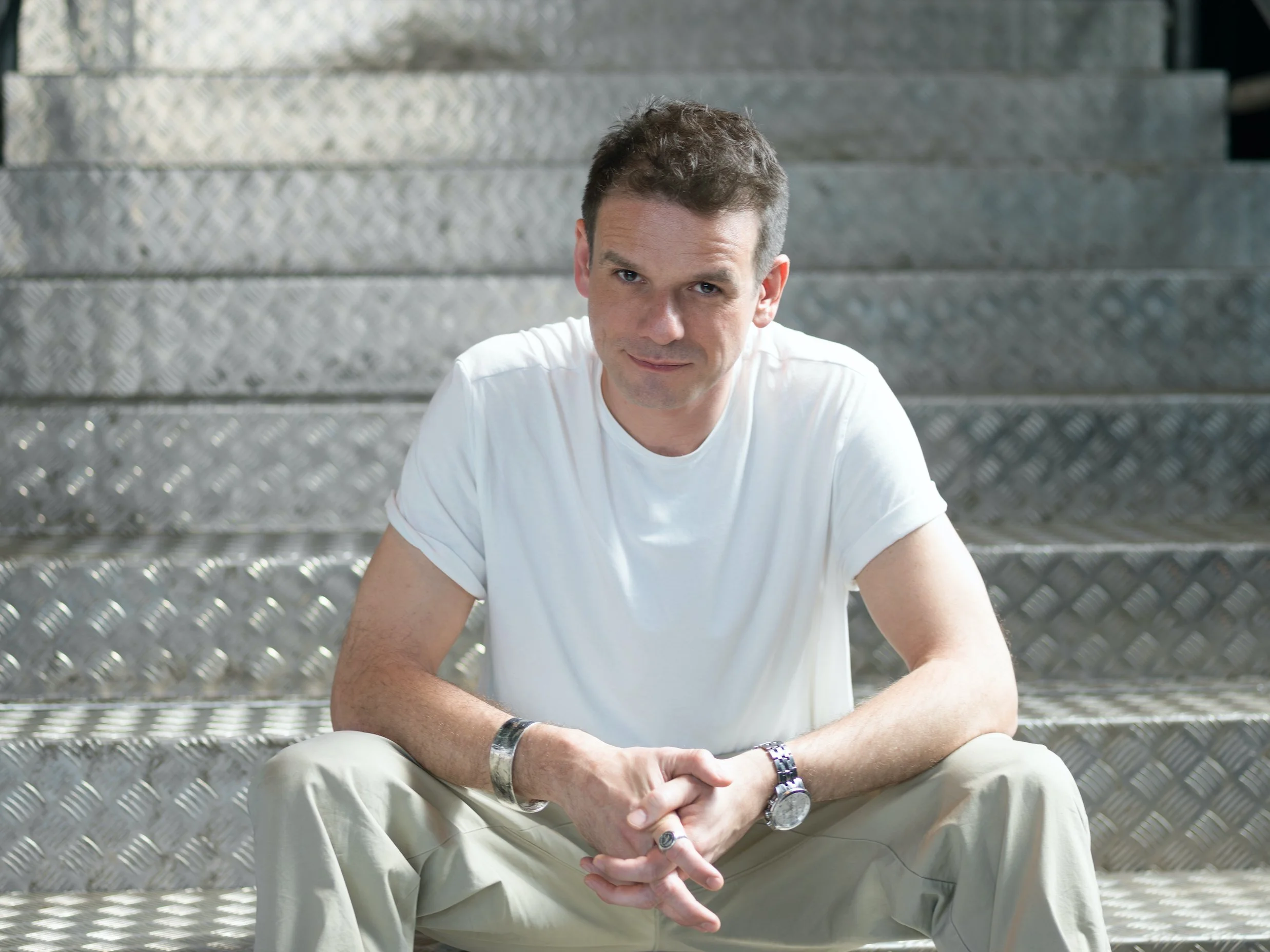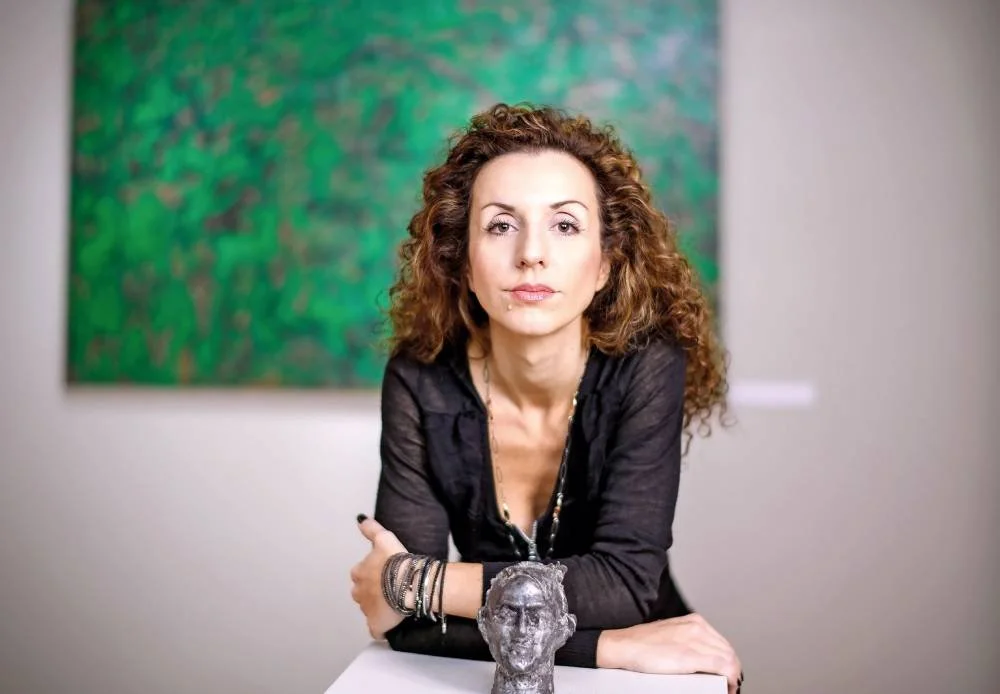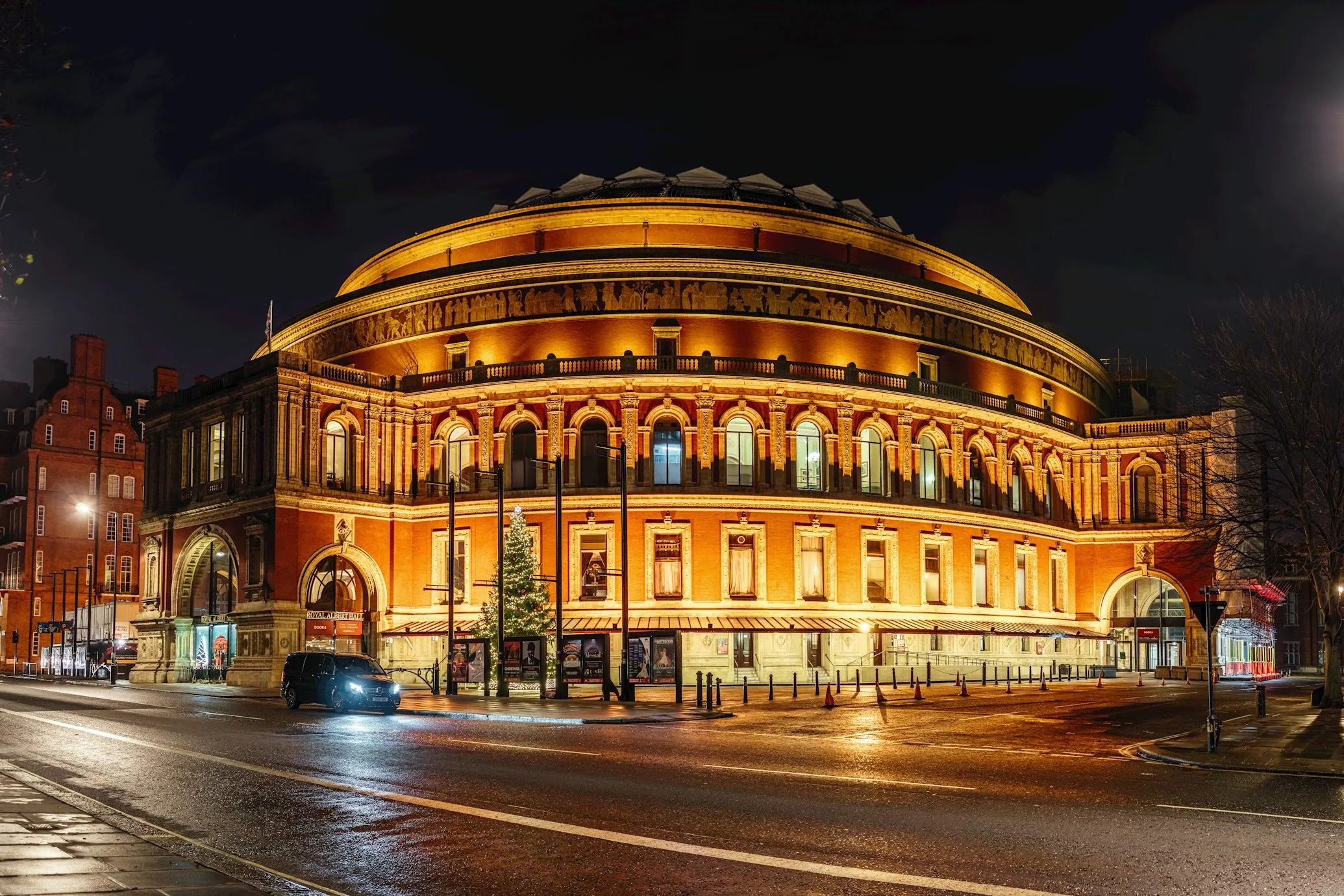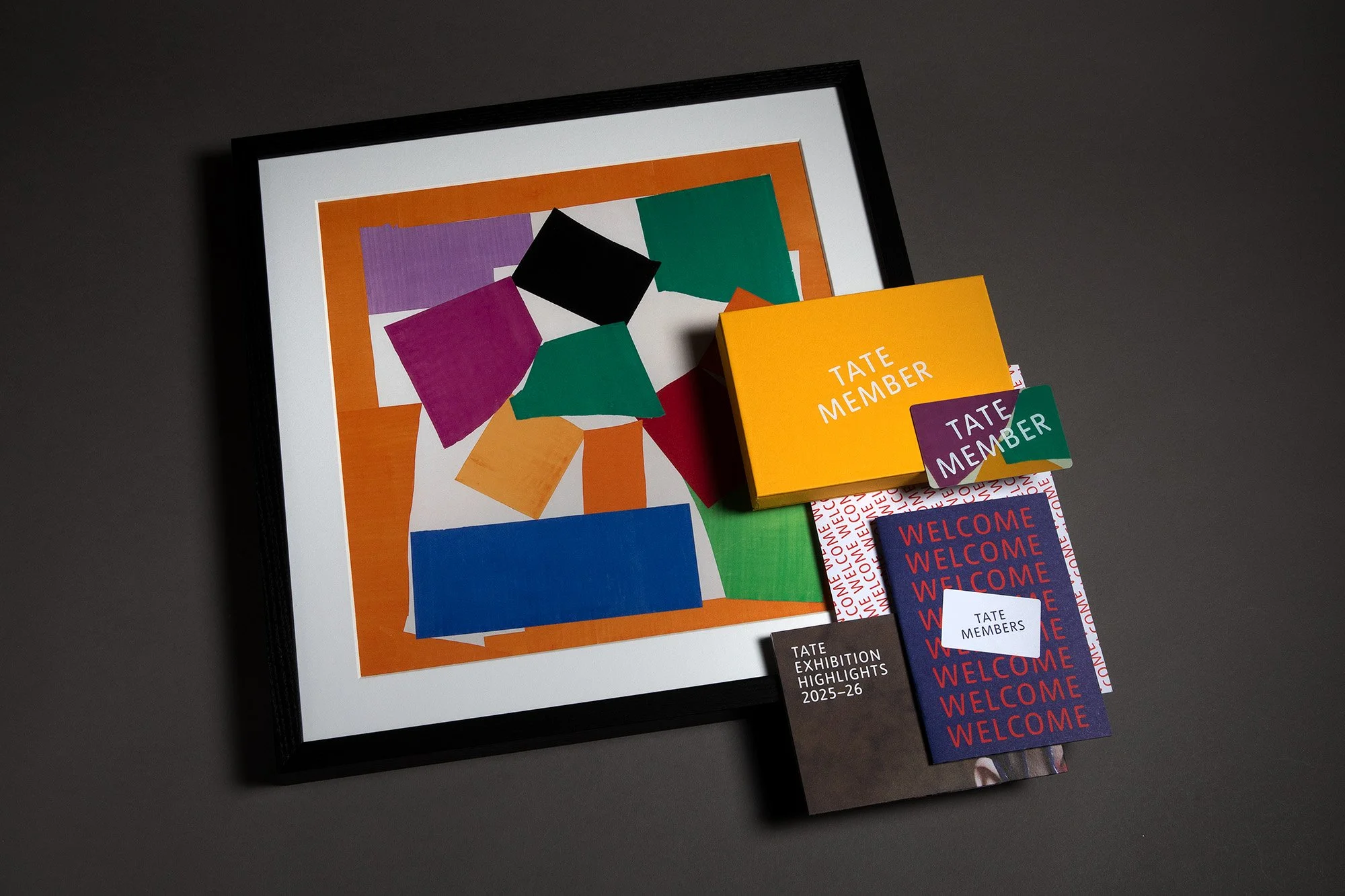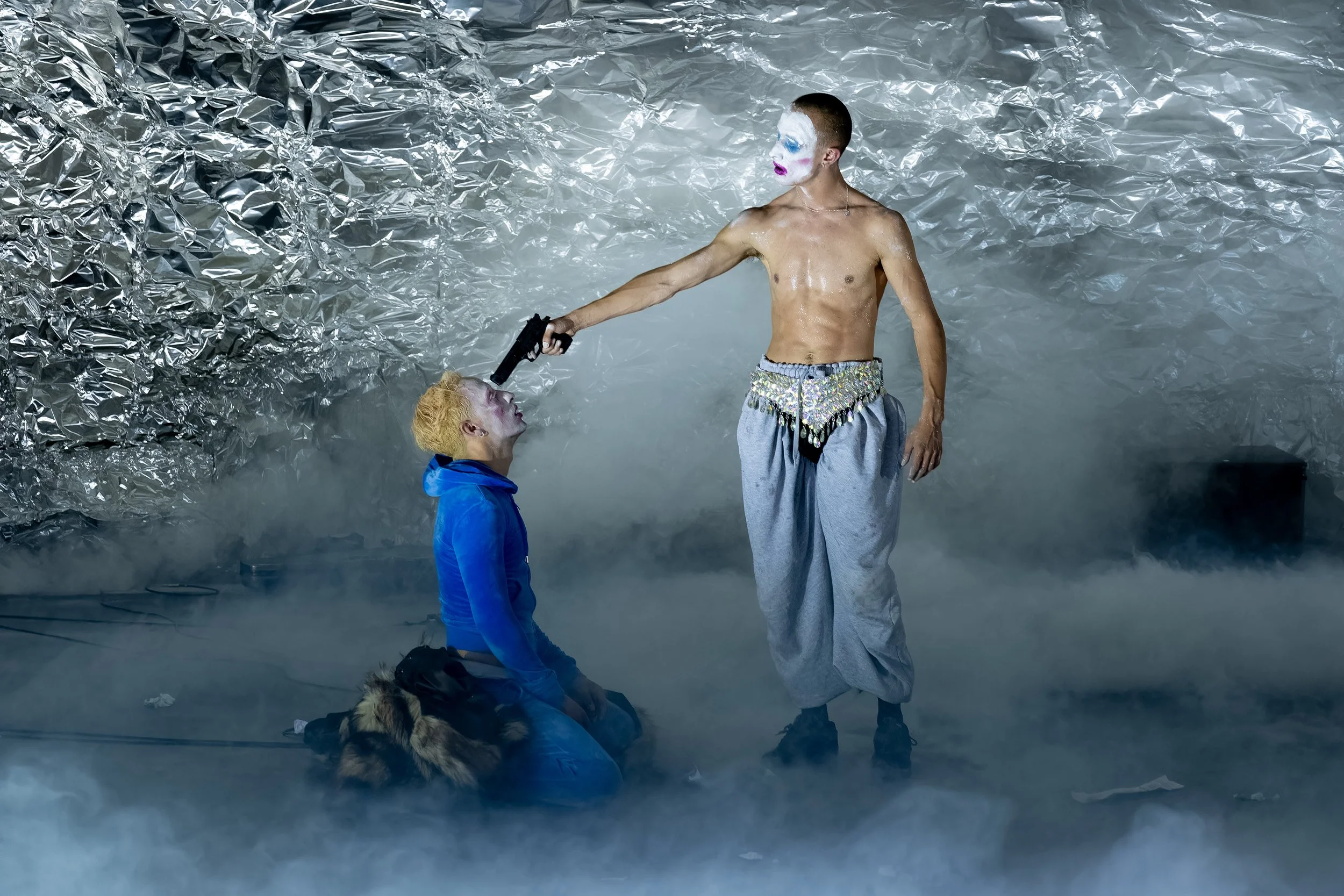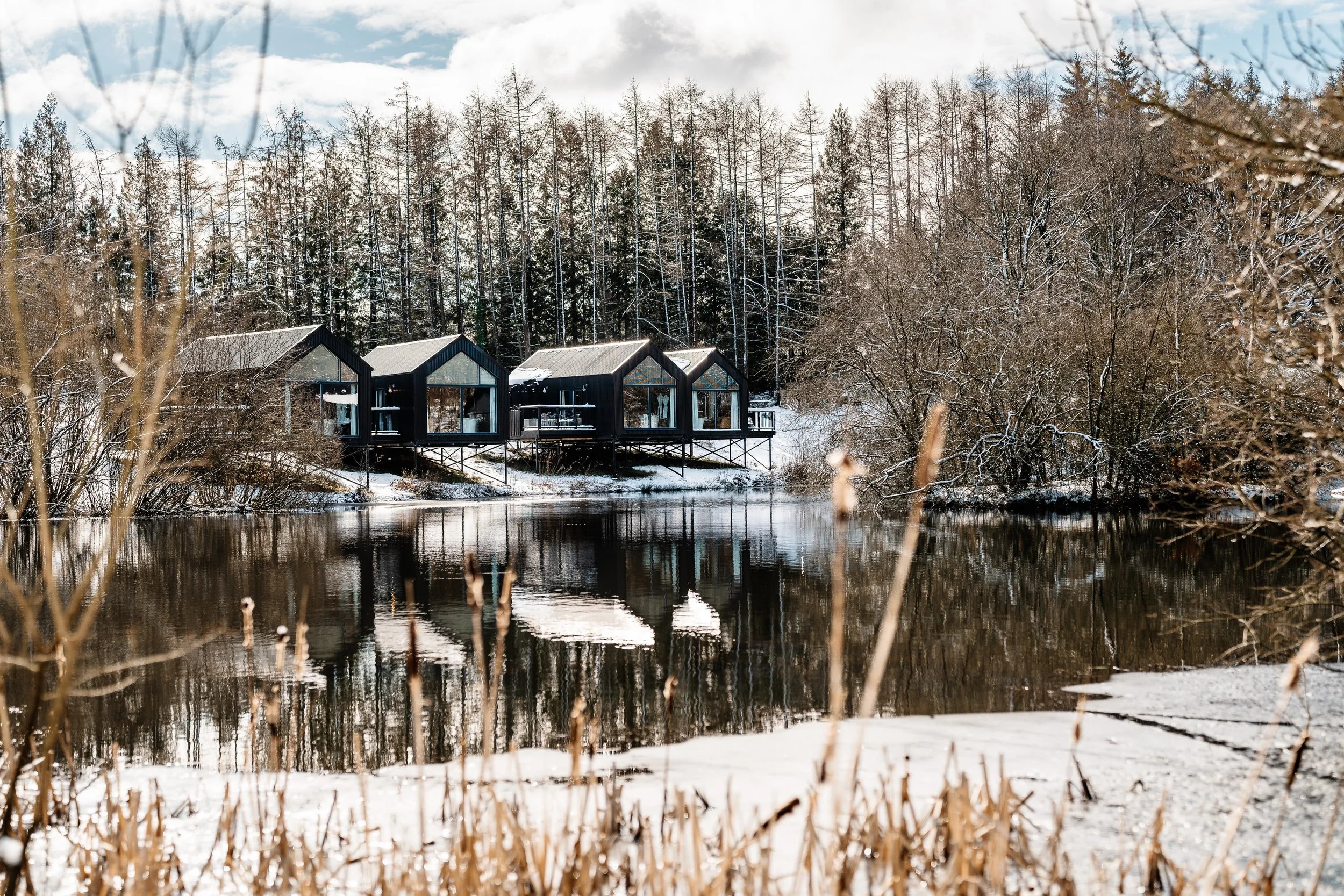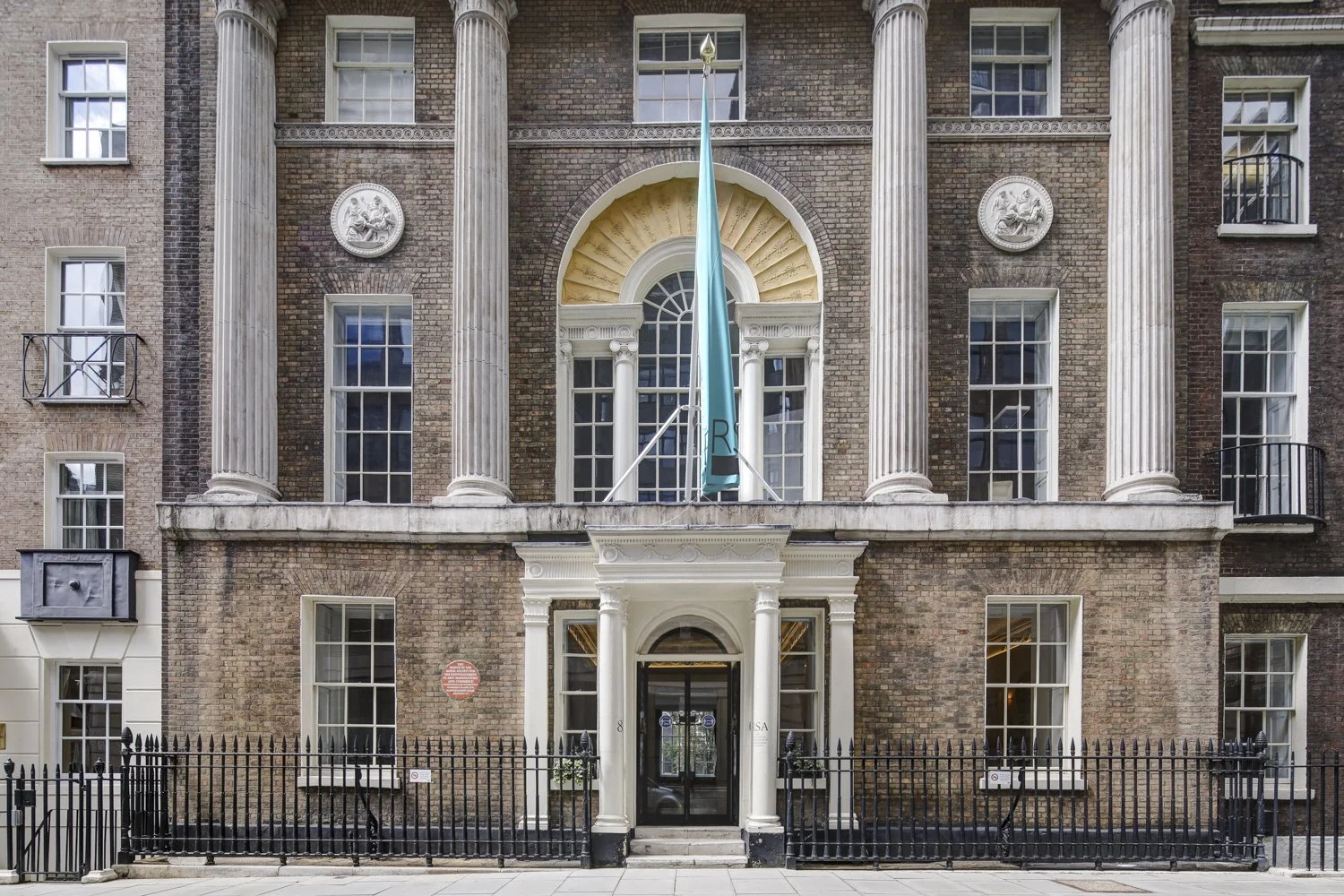In conversation with Lewis Walker
“‘Bornsick’ is basically the experience of being a queer child, born into a society where your existence is othered and can be condemned or confused.”
- Lewis Walker
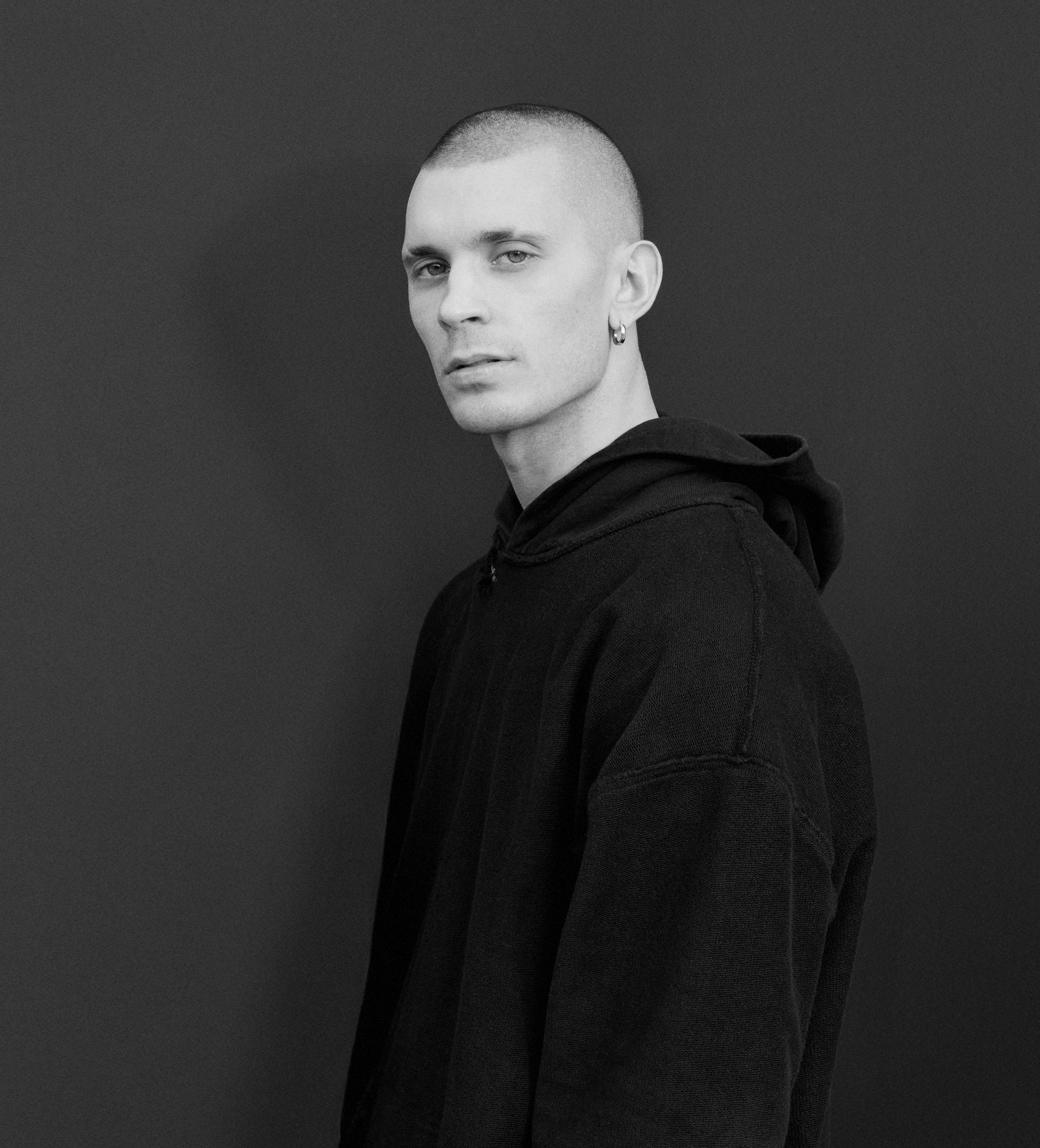
Lewis Walker. Photo by Paul Scala.
Lewis Walker is a London-born queer, non-binary movement artist. A former Great Britain gymnast and Acrobatic Gymnastics World Champion, they trained from age 6 to 21 before earning a degree in Contemporary Dance. Their work spans theatre, film, fashion, music, and the commercial sector. Walker continues to choreograph gymnastics competition routines for the Great Britain, Italian and French national teams. Their creative vision and dynamic movement style have led to collaborations with Tim Walker, Yorgos Lanthimos, ANOHNI, Tirzah, BULLYACHE, Burberry, UNTITLAB, and the Institute of Contemporary Arts (ICA).
Beyond performance, Walker is dedicated to teaching movement as a tool for accessing deeper states of consciousness and developing a deeper understanding of consensual touch. Their Connecting to Improv workshop explores dance improvisation as a ritual of shared energy and expression, while MOVE HYPNO, a collaboration with hypnotherapist Michele Occelli, blends movement and hypnotherapy for personal transformation.
Walker is currently a Studio Wayne McGregor RESIDENT 6 artist-in-residence.
We had a chat with them ahead of the premiere of Bornsick—their latest commission as part of the Serpentine Galleries’ live programme—which opens at The Round Chapel, Clapton on 21 & 22 May, before heading to the Edinburgh Art Festival on 23 August 2025.
You have had an extraordinary journey from world champion gymnast to acclaimed movement artist. What drew you to transition from competitive sport into the world of dance and performance?
From the age of 6 I had been completely hooked on acrobatic gymnastics, the history, culture, community and the training, it was my first love. I think the beginning of the end was when an internal dialogue regarding my queerness started getting louder, and in consequence a desire to gain knowledge and expansion outside of gymnastics. You train 6 days a week, and your life outside of the gym is usually doing things which supplement or safeguard the training. I started getting quite anxious towards the end of my career, bit fearful of the dangers of the sport and the responsibility I had with the gymnast I was training with, but in hindsight I think the lack of identity outside of gymnastics was diminishing my self-esteem. I had an ex-partner at the time who completely opened my eyes to world politics, queerness, race, colonisation, capitalism and in a very beautiful and needed way, a rude awakening. This separation from such a controlled and focused lifestyle enabled me to discover queer communities and friendships, where people literally liberated my mind and shifted how I saw the world. Dance was also part of that, because I was able to reconnect with movement where I wasn’t being scored or corrected, and I could learn to enjoy moving for pleasure with no outcome.
Your movement style carries the precision of gymnastics but feels instinctive and emotive. How do you balance discipline with vulnerability in your physical language?
I think after 15 years of gymnastics, it is quite hard to shake the training and also the discipline. Being vulnerable within a show is performing something I am yet to feel liberated about. For example, choosing to perform nude because of insecurities in my body, or performing in stereotypically effeminate styles or attires because I hadn’t accepted parts of my gender expression. I think crossing these emotional barriers alongside a long-term and comfortable physical training helps balance the shows and also the audience experience.
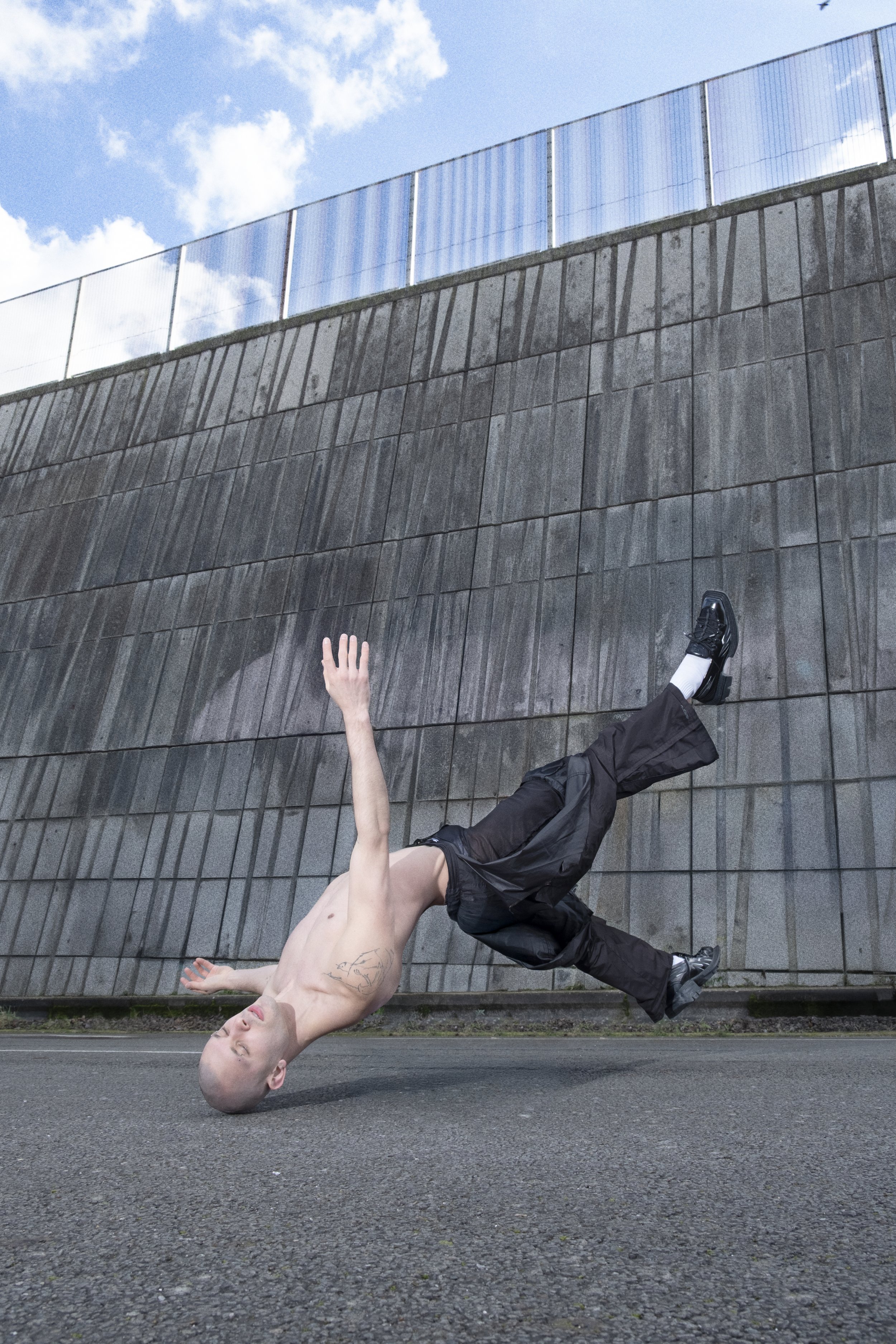
Lewis Walker, Bornsick, 2025. Co-commissioned by Serpentine and EAF (Edinburgh Art Festival). Poster photography by: YISKID. Courtesy the artist, Serpentine and EAF.
Your latest commission, Bornsick, will premiere at The Round Chapel in May. How did the piece come together — from the initial idea to working with Serpentine and building a work of this scale?
Kostas, the Serpentine curator for the live performance commission came to watch my last show Compete for Me at the Resolution festival at The Place. I had a lot of people question me whether I would tour, extend and let the work continue, but I felt I needed a break from creating and to focus on my teaching practice. Kostas however approached me 7 months later and offered to commission a new work. I didn’t have a concept for a show in the pipeline, so I began figuring out what felt important to me at that moment. I had been getting quite obsessed with the conspiracy theory that shapeshifting reptilian aliens were controlling the Earth. Bear with me, I have always been very fascinated and scared of reptiles, and felt a natural embodiment of them in my movement language as an improviser. I don't believe that I am a reptilian alien, but it highlighted my experience as a queer person and the constant shapeshifting of character and expression depending on time and environment. Bornsick is basically the experience of being a queer child, born into a society where your existence is othered and can be condemned or confused. When things like your gender or sexuality do not fit into the status quo, how do we as a community use references and sub-communities of queerness to form identities. I started with the intention of having quite a scaled back work, nothing to elaborate and something sustainable to tour a lot, however as the work has grown, it’s become more ambitious, complicated and on a scale I haven’t worked at before. I love the challenge and the excitement of all the collaborators, I just hope that the work can live on in many countries and iterations while my body can perform it.
You are staging it in the round on a full gymnastics sprung floor — which is a statement in itself. What does that kind of space allow you to do that a traditional stage does not?
The floor is made up of planks of wood, springs and a thick spongy carpet top. This creates the capacity to complete gymnastics elements, like somersaults, tumbles and falls which I cannot do on a conventional dance floor. My home is at this stage, competing globally in my childhood and early 20’s. I think the bravest moments in my life have been on this type of stage, packed out stadiums, rows of judges, and having to perform routines which I know if done perfect, could guarantee World Champion status. The margins for errors are so fine, so you can imagine waiting to mount the floor is a complex mindset of delusional confidence, excitement, fear and pressure. The history of years and years of mounting the mat, showing up, falling, winning, crying, injuring, falling over, getting up and most importantly performing, lives in me, and taking this to theatre or art contexts is a perfect way to showcase the physical extremes of competitive landscapes.
You have described your work as navigating inherited systems. What systems are you trying to break down or reimagine in Bornsick?
Many. Systems of oppression—including straight, heteronormative, and cisnormative systems—particularly within the UK and Eurocentric ideals, which perpetuate the binary of two genders. This rigidity creates unattainable expectations around how to live and live freely. The gender binary doesn’t just affect queer people, who actively push its boundaries; it affects everyone inside it, everyone playing roles, limiting the human experience to the expectations set by gender assigned at birth.
From birth, we—including myself—project a life determined by sex. I have a baby nephew, and when I imagine a life where he might be queer—perhaps gay, trans, or asexual—it feels almost like imagining a mystical existence for him, one where the world itself is at odds with who he could be. Perhaps that’s how I truly feel: that my queerness isn’t made for this world, or at least not for the frequency that Earth is currently vibrating on.
You have moved between elite sport, fashion, music, and experimental performance. Is there a space you have not stepped into yet that you are curious to disrupt?
Yes - I would love to choreograph for film, my movement has become increasingly more distorted and abstract, and choreographing for a zombie apocalyptic sci-fi alien moment would be right up my street. Simultaneously I have wanted to create a documentary art film covering the movement workshops I teach. My mum, nearly 70, and lots of non trained dancers, professional dancers and artists join for 3 hours of dancing and connecting in. It’s where I have found my purpose, and a place where I can witness and experience pure joy, liberation, and a very visceral shedding of stagnant energy.

Lewis Walker, Bornsick, 2025, trailer, still. Film by Leah Walker. Courtesy the artists, Serpentine and EAF.
The [Quick] #FLODown:
Best life advice?
Meditate
Last song you listened to?
Save Your Tears - The Weeknd + Arianna Grande
Last book you read?
The Artist Way by Julia Cameron
Can't live without…?
My Partner Courtney
What should the art world be more of and less of?
More support for neurodivergent and disabled artists
Less money from business that invest in weapons
Bornsick premieres at The Round Chapel, Clapton on 21 & 22 May and will then run at Edinburgh Art Festival on 23 August 2025.
Website: lewiswalker.uk
Instagram: @lewiswalker_x
Charlotte Winifred Guérard is a London-based artist and recent graduate of the Royal Academy of Arts School, where she was recognised as a Paul Smith’s Foundation scholar for her artistic achievement. Her work has been exhibited at the Royal Academy, Coleman Project Space, Fitzrovia Gallery, Messums and Palmer Gallery, and she has completed prestigious residencies including…
BBC Radio 1 presenter, DJ, podcaster, and award-winning entrepreneur Jaguar joined us for our In conversation with series to discuss her journey from sneaking out to raves on the tiny island of Alderney to becoming a tastemaker in the UK dance scene, her debut EP flowers…
Annie Frost Nicholson is an artist whose work sits at the electric intersection of personal memory, public ritual and emotional release. Known for transforming private grief into bold, colour-saturated experiences - from stitched paintings to micro-discos - Annie’s practice creates space for collective healing without losing the rawness of its origins…
We spoke to visionary director Łukasz Twarkowski ahead of the UK premiere of ROHTKO, a groundbreaking production that takes inspiration from the infamous Rothko forgery scandal to ask urgent questions about originality, truth and value in art today. Combining theatre, cinema, sound and digital technology, the work challenges…
Iranian-born British curator and producer Tima Jam is the Founder of Art Voyage, a new migrant-led cultural platform committed to building a dynamic, equitable, and globally connected arts ecosystem through novel initiatives comprising exhibitions, public art, summits, residences, and community engagement to create a lasting cultural and social impact…
Betty Ogundipe (b. 2001) is a multidisciplinary artist of Nigerian heritage whose work explores resilience, femininity, and the power of love and resistance. Her debut solo exhibition, LOVE/FIGHT at Tache Gallery…
Absolut Vodka celebrated the launch of its Keith Haring Artist-Edition bottle with a public art takeover, transforming London’s Charing Cross station into “Haring Cross” on 17–18 September. We spoke with Deb Dasgupta, Absolut’s Vice President of Global Marketing…
Maya Gurung-Russell Campbell is an artist working across sculpture, image, and text, exploring personal and collective memory. She is currently studying at the Royal Academy Schools (graduating 2026) and holds a BA in Photography from the London College of Communication…
YARA + DAVINA make social practice artwork, creating ambitious public artworks that respond to site, context and audience. Unfailingly inventive, they use formats from within popular culture to make works which are accessible and playful…
Benni Allan is the Founding Director of EBBA Architects, a London-based studio recognised for its ambitious, cross-disciplinary approach that bridges architecture, culture, fashion and design. Benni founded EBBA to unite his passion for architecture, making and collaborative practice. In this interview, Benni discusses EBBA’s ethos and Pulse, a new installation commissioned for Houghton Festival at Houghton Hall…
Oskar Zięta is an architect, process designer and artist whose work challenges the boundaries between disciplines. His practice brings together design, engineering, art and bionics to create sculptural forms. His latest installation, ‘Whispers’, is currently on display outside One New Ludgate as part of the London Festival of Architecture 2025…
Danny Larsen is a Norwegian artist who has transitioned from a successful career in professional snowboarding to establishing himself as a distinctive painter. His detailed neo-pointillist landscapes reflect a deep connection to nature and a personal journey of transformation. Ahead of his debut London solo exhibition…
Nimrod Vardi and Claudel Goy, directors of arebyte Gallery, discuss how the space is redefining digital art by blending technology, social science, and immersive experiences. From AI and consciousness to the societal impact of tech, arebyte’s bold exhibitions go beyond visual spectacle, focusing on meaningful engagement and innovative presentation…
Varvara Roza is a London-based private art advisor and artist representative. She specialises in promoting contemporary art by both established and emerging international artists. In our conversation, we discussed her unique approach to the art market…
David Ottone is a Founding Member of Award-winning Spanish theatre company Yllana and has been the Artistic Director of the company since 1991. David has created and directed many theatrical productions which have been seen by more than two million spectators across 44 countries…
Akinola Davies Jr. is a BAFTA-nominated British-Nigerian filmmaker, artist, and storyteller whose work explores identity, community, and cultural heritage. Straddling both West Africa and the UK, his films examine the impact of colonial history while championing indigenous narratives. As part of the global diaspora, he seeks to highlight the often overlooked stories of Black life across these two worlds.
Gigi Surel is the founder of Teaspoon Projects, a groundbreaking cultural initiative launching in London with its first exhibition and programme. Dedicated to exploring contemporary storytelling, Teaspoon Projects blends visual arts and literature while encouraging audience participation through carefully curated events.
Dian Joy is a British-Nigerian interdisciplinary artist whose work delves into the intersections of identity, digital culture, and the fluid boundaries between truth and fiction. Her practice is rooted in examining how narratives evolve and shape perceptions, particularly in the digital age.
Youngju Joung is a South Korean artist known for her paintings of shanty village landscapes, illuminated by warm light. Inspired by memories of her childhood in Seoul, she uses crumpled hanji paper to create textured, lived-in spaces that reflect both poverty and affluence.
John-Paul Pryor is a prominent figure in London’s creative scene, known for his work as an arts writer, creative director, editor, and songwriter for the acclaimed art-rock band The Sirens of Titan…
Poet and novelist Hannah Regel’s debut novel, The Last Sane Woman, is a compelling exploration of the emotional lives of two aspiring artists living at different times, yet connected by the discovery of a box of letters in a forgotten feminist archiv…
Daria Blum, a 2023 RA Schools graduate, won the inaugural £30,000 Claridge’s Royal Academy Schools Art Prize in September. Her exhibition, Drip Drip Point Warp Spin Buckle Rot, at Claridge’s ArtSpace...
We recently interviewed Eden Maseyk, co-founder of Helm, Brighton’s largest contemporary art gallery, which has quickly established itself as a thriving cultural hub…
Lina Fitzjames is a Junior Numismatist at Baldwin’s Auction House, located at 399 Strand. She is part of a new generation reshaping the image of numismatics, the study of coinage….
Sam Borkson and Arturo Sandoval III, the acclaimed LA-based artists behind the renowned collective "FriendsWithYou," are the creative minds behind "Little Cloud World," now on display in Covent Garden. During their recent visit to London, we had the privilege of speaking with them about their creative process and the inspiration behind this captivating project.
Paul Robinson, also known as LUAP, is a London-based multimedia artist renowned for his signature character, The Pink Bear. This character has been featured in his paintings, photography, and sculptures, and has travelled globally, experiencing both stunning vistas and extreme conditions…
Koyo Kouoh is the Chief Curator and Executive Director of Zeitz MOCAA…
Matilda Liu is an independent curator and collector based in London, with a collection focusing on Chinese contemporary art in conversation with international emerging artists. Having curated exhibitions for various contemporary art galleries and organisations, she is now launching her own curatorial initiative, Meeting Point Projects.
Lily Lewis is an autodidact and multidisciplinary artist working in the realms of the narrative, be that in the form of a painting, a poem, large scale sculptures, tapestry, or performance…
Paul Vanstone is a sculptor recognised for his expertise in marble carving and depiction of human figures and fabric using light and stone interplay. He studied at Central St. Martins School of Art and completed an MFA at the Royal College of Art…

The Southbank Centre has announced Classical Mixtape: A Live Takeover, a one-night-only, multi-venue event taking place in February 2026, bringing together more than 200 musicians from six orchestras across its riverside site…
This week in London features late-night Christmas shopping on Columbia Road, festive wreath-making workshops, live Brazilian jazz, mince pie cruises, theatre performances, art exhibitions, a Christmas disco, and volunteering opportunities with The Salvation Army.
Discover London’s unmissable 2026 fashion exhibitions, from over 200 pieces of the late Queen’s wardrobe at The King’s Gallery to the V&A’s showcase of Elsa Schiaparelli’s avant-garde designs and artistic collaborations…
Marking her largest UK project to date, Sedira’s work will respond to the unique architectural and historical context of the iconic Duveen Galleries, offering audiences an experience that merges the political, poetic, and personal…
This week in London, enjoy festive events including Carols at the Royal Albert Hall, LSO concerts, designer charity pop-ups, late-night shopping, art exhibitions, film screenings, foodie experiences, last-chance shows, and volunteer opportunities across the city…
Explore Belgravia this Christmas with a festive pub crawl through London’s most charming historic pubs, from The Grenadier’s cosy mews hideaway to The Nags Head’s quirky classic tavern…
From the joys of Christmas at Kew to the lively Smithfield meat auction, and from major concerts and ballets to intimate workshops and family-friendly trails, the city offers an extraordinary mix of experiences. This guide brings together the very best of Christmas in London…
This guide highlights some of the must-see art exhibitions to visit over the festive period in London, including the days between Christmas and New Year’s. From major retrospectives of international masters such as Kerry James Marshall, Wayne Thiebaud, and Anna Ancher, to engaging contemporary works by Danielle Brathwaite-Shirley, Jennie Baptiste, and Tanoa Sasraku…
London’s cultural scene, a gallery or museum membership is the perfect alternative to another pair of socks. From unlimited access to exhibitions and exclusive events to discounts in shops and cafés, these memberships offer experiences that can be enjoyed throughout the year, while also supporting the vital work of arts organisations…
Your guide to London’s can’t-miss events this week, 17–23 November 2025, from Cabaret Voltaire live at ICA to Ballet Shoes at the National Theatre and The Evolution of UK Jazz at the Barbican…
Charlotte Winifred Guérard is a London-based artist and recent graduate of the Royal Academy of Arts School, where she was recognised as a Paul Smith’s Foundation scholar for her artistic achievement. Her work has been exhibited at the Royal Academy, Coleman Project Space, Fitzrovia Gallery, Messums and Palmer Gallery, and she has completed prestigious residencies including…
This week in London, you can enjoy festive ice skating, Christmas lights, jazz and classical concerts, and a range of art exhibitions. Highlights include Skate at Somerset House, Christmas at Kew, the EFG Jazz Festival, and the Taylor Wessing Photo Portrait Prize 2025…
From the 6th to the 9th of November, the leading West African art fair Art X Lagos celebrates its 10th birthday at the Federal Palace on Victoria Island. Founded by Tokini Peterside-Schwebig in 2016, the fair has become an unmissable event in the global art calendar, attracting galleries from over 70 countries and participants from 170 countries since its launch…
If you’re after something bold, queer and completely uncategorisable this November, you need to know about KUNSTY, the Southbank Centre’s brand new four day performance series running from 5-8 November 2025…
London’s most beloved Christmas activity is back. As festive cheer returns to the city, with twinkling lights and the scent of mulled wine drifting through the air, for many Londoners and visitors from further afield, nothing quite captures the spirit of the city at Christmas like strapping on a pair of skates and stepping onto the ice…
As the crisp autumn air settles over London, the iconic gardens of Berkeley Square are once again hosting one of the most anticipated gatherings in the art and antiques world: the LAPADA Fair 2025, running from 28 October to 2 November…
November is a lively time to be in London, with the festive season in full swing and the city buzzing with events. From skating at Somerset House to Christmas lights switch-ons and festive markets like the Southbank Centre Winter Market, there are plenty of ways to embrace the holiday spirit. Beyond the seasonal festivities, London’s cultural calendar is brimming with art, music, and performance…
As far as weekend getaways go, this 70-acre estate offers a peaceful country escape with all the best elements of a traditional hotel experience. Staffordshire, arguably, is not yet on the map for luxury and leisure but set in the heart of the beautiful Staffordshire Moorlands, The Tawny surely is a beacon of things to come…
Art Basel Paris returns to the Grand Palais for its second edition from 24–26 October 2025, bringing together 206 leading galleries from 41 countries and territories. Below is our guide to seven artists not to miss at this year’s edition, each presenting distinctive work through their galleries…
Art Basel Paris 2025’s Public Programme turns the city into a stage for contemporary art, placing bold, large-scale works in streets, courtyards, and cultural landmarks - all free to visit. From a dreamy opera of 30 surreal figures at Palais d’Iéna to a colossal Kermit the Frog balloon looming over Place Vendôme, here is our guide to five standout works from the Art Basel Public Programme that you simply cannot miss…
Frieze London 2025 returns to Regent’s Park with a dynamic mix of emerging and established galleries, reaffirming the city’s creative pulse. Highlights include Esther Schipper’s dreamlike works by Sarah Buckner, Gagosian’s vibrant installation by Lauren Halsey, and Pace’s meditative paintings by William Monk. From Do Ho Suh’s ethereal fabric architectures at Lehmann Maupin…
Paris launches into its own spectacular celebration of art each October, transforming the city into a hub for collectors, curators, and cultural enthusiasts. From the grandeur of Art Basel Paris at the newly renovated Grand Palais to the focused energy of Paris Internationale, OFFSCREEN, AKAA and Menart, each fair contributes something unique to the city’s vibrant art scene.
British Ceramics Biennial is back and better than ever. Running until 19 October 2025, the dynamic programme of free exhibitions, screenings, talks and events is proving a hit with both locals and critics…and just an hour and a half’s train away from London, it’s well worth a day trip…
Echoes of Migration is the flagship summit to launch new not-for-profit platform Art Voyage this autumn. Echoes of Migration officially inaugurates Art Voyage’s innovative, itinerant cultural programme…and gears us up for what is in store for the Art Voyage Biennial….
Betty Ogundipe (b. 2001) is a multidisciplinary artist of Nigerian heritage whose work explores resilience, femininity, and the power of love and resistance. Her debut solo exhibition, LOVE/FIGHT at Tache Gallery…
The V&A’s Marie Antoinette Style, sponsored by Manolo Blahnik, is being hailed as the first landmark exhibition in the UK devoted to France’s most infamous Queen of Fashion. It is a glittering journey through silk, flamboyance and legacy….
Malta is fast becoming one of the Mediterranean’s hottest destinations, offering sun-soaked beaches into October, a thriving arts and culture scene, and stunning architecture and landscapes…

